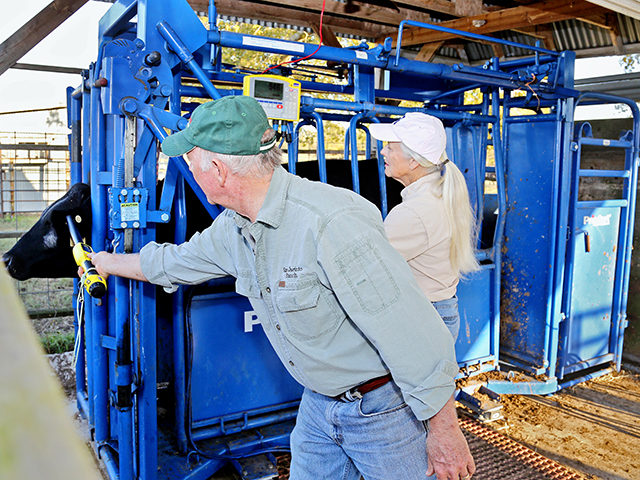Weigh the Options
Cattlelink - Weigh the Options
The average cow/calf producer doesn't always do such a great job when it comes to guessing weights. But, when management is intensely focused on saving money and boosting profits, accurate weights on individual animals is a proven key to success. Arnold Nagely, a veterinarian and CEO of Valley Vet Supply, says knowing individual weights allows producers to monitor the rate of gain, allowing them to more closely watch inputs. In addition, they can track sale-day weights and even reduce treatment and vaccination costs thanks to correct dosing. True weights are even a guide to keeping the best cows in the herd.
On the marketing side, Jason Jones, an analytics and data management specialist, reports cases where not being able to monitor weights resulted in lower gains on steers a rancher intended to market at 800 pounds. The steers came in under that goal weight (8 pounds per head), resulting in a $545 lower take-home on each load.
P[L1] D[0x0] M[300x250] OOP[F] ADUNIT[] T[]
CHOOSING A SET OF SCALES
There is no one-size-fits-all system of scales for cattle operators. A complete livestock scale system today typically includes a weigh-scale indicator, platform, squeeze chute, load bars and load cell, electronic ID (EID) reader and EID ear tags. Jones and Nagely note producers should consider three questions before buying scales.
1. Do the scales need to be permanent or portable? Anâ?? advantage of permanent scales is a load bar is placed under the squeeze chute and bolted to a concrete pad. The more level the load bar, the more accurate. Choosing a permanent or portable system helps determine which load bar is best.
2. How will you record weights? A physical readout of the weight can be handwritten into a record book. More advanced scales work with EID ear tag readers and automatically sync weights into a digital recordkeeping system.
3. How much data do you need? Scales can do a lot more than weigh animals. Scale indicators can capture data such as breed, sex, preg-check status or sire/dam information. Producers can group animals based on various characteristics, even program and batch-number vaccinations, with a dosage calculator on some models.
[PF_0221]
(c) Copyright 2021 DTN, LLC. All rights reserved.



